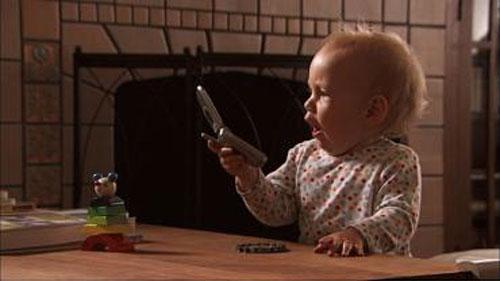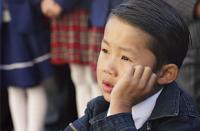Энэ 7 хоногт
Bay Area baby represents U.S. in global film
When the new film by French filmmaker Thomas Balmиs had its Bay Area benefit premiere in San Francisco on April 14, the one local star was a no-show. She wasn’t being a diva it was simply past her bedtime.

When the new film by French filmmaker Thomas Balmиs had its Bay Area benefit premiere in San Francisco on April 14, the one local star was a no-show. She wasn't being a diva; it was simply past her bedtime.
"The premiere started at 7:30, and that's when she goes to sleep," says her mother, Susie Wise.
Hattie is one of four babies profiled in the first 18 months of life for the amazing documentary "Babies." Her family moved from San Francisco to Oakland right before her birth, but the film assigns her the more internationally recognizable San Francisco as her geographical identity. The three other babies are Ponijao from rural Opuwo, Namibia; Mari from urban Tokyo; and Bayar from nomadic Bayanchandmani, Mongolia.
Unlike most documentaries, there is no narration, and there are no interviews. The camera observes the babies in their habitats, doing what babies do, which turns out to be remarkably similar from culture to culture.
Clever juxtapositions do point up telling contrasts, though. For example, the babies in Japan and the United States are surrounded by toys, sophisticated strollers and busy moms' groups, while the baby in Namibia crawls in the dirt and plays with rocks and bones, and the baby in Mongolia roams freely among herd animals.
"I was nervous to see the film because I was afraid we'd be typecast," Wise admits. "Would we be the ugly Americans, all into technology and super overbearing in our parenting or super materialistic or something? But when I saw it, I felt pretty good. It feels pretty much like us."
Wise and her husband, cinematographer and filmmaker Frazer Bradshaw (his drama "Everything Strange and New" was a film festival favorite in 2009), got involved with the project in January 2006, when Bradshaw was hired to shoot the San Francisco segment. At the end of the interview, he was asked if he knew of any families that would be having a baby in April or May. "Well, my wife happens to be pregnant," he offered.
Wise says she still remembers getting her husband's call when she was walking down the street at Stanford, where she did her doctoral studies in education and teaches at the Hasso Plattner School of Design. "When he described it, I liked that it would be very observational and that Hattie would have this kind of magical connection to three children in other places. And I also liked that this would be a job for Frazer as a cinematographer that he could do at home for the first year and a half of her life."
Wise says he shot several times a week for the duration, and the French team came "five or six times" to shoot footage as well. "When they came, it was a bigger deal, but for most of the shooting, it was just a part of our life, and Frazer was doing it, so it wasn't a huge deal."
Wise is happy with the editing, for the most part. She's disappointed that the first-time viewers see Hattie, she is in a high-tech hospital setting, where she is being treated for some post-birth breathing issues. "Frazer shot that, and it's beautiful cinematically, but she actually had a beautiful home birth that unfortunately wasn't able to be captured."
Hattie hasn't seen the whole movie yet. (She lasted partway through a home DVD viewing with director and co-executive producer Balmиs in December.) But she loves the trailer. "She doesn't like the first scene, where the Namibian siblings fight and bite and cry," Wise says, "but she loves the one of the goat drinking the baby's bathwater in Mongolia."
When she sees herself onscreen she doesn't say, "That's me"; the about-to-turn-4 girl says, "That's baby Hattie."
How do Wise and Bradshaw feel about representing their country in an international film?
"We find it hilarious," Wise says. "We don't think of ourselves as the most mainstream Americans. We're very mainstream Bay Area. We are who we are, and we're comfortable with ourselves."
Babies: Opens next Friday at Bay Area theaters.






